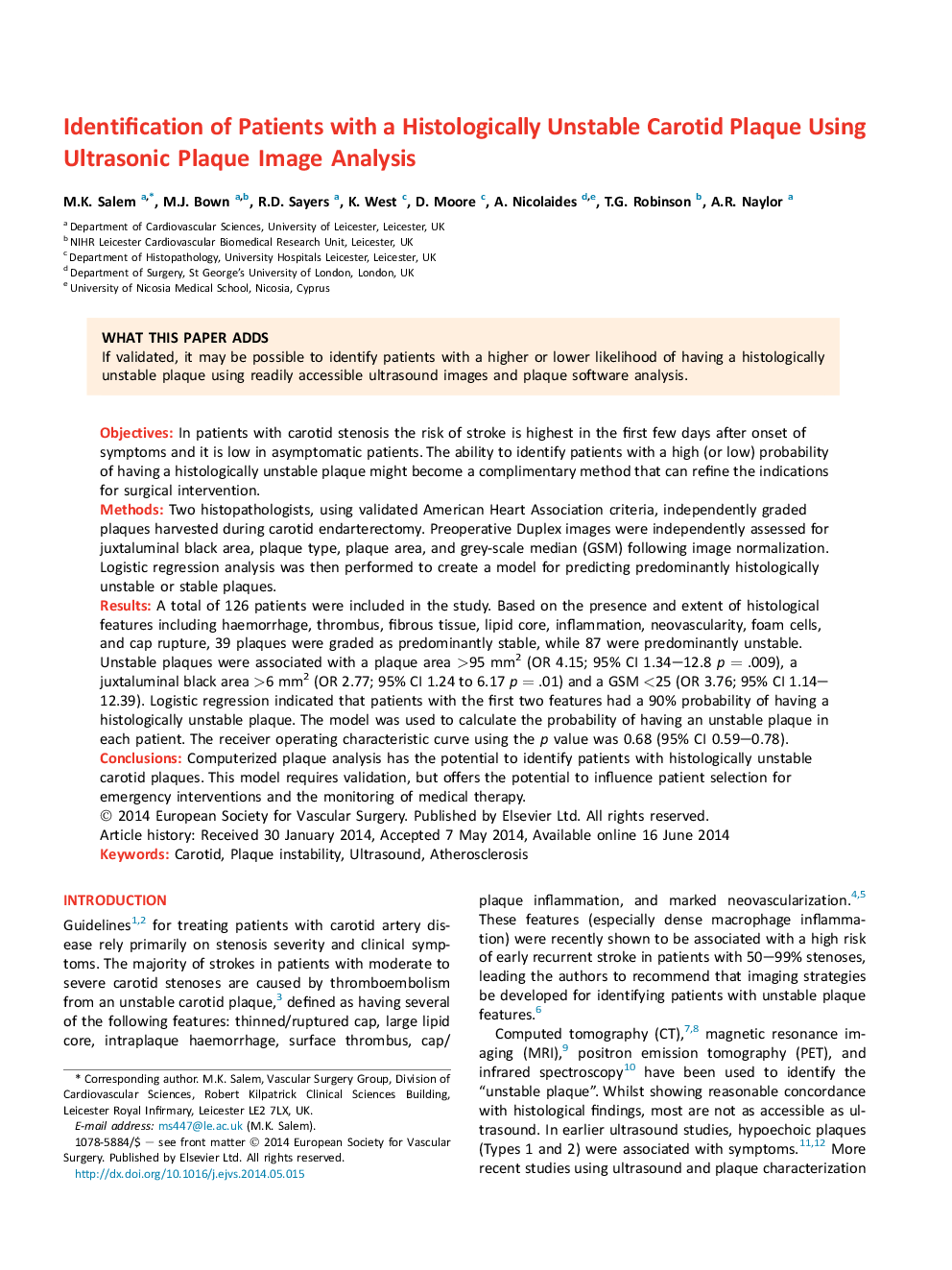| Article ID | Journal | Published Year | Pages | File Type |
|---|---|---|---|---|
| 5958188 | European Journal of Vascular and Endovascular Surgery | 2014 | 8 Pages |
ObjectivesIn patients with carotid stenosis the risk of stroke is highest in the first few days after onset of symptoms and it is low in asymptomatic patients. The ability to identify patients with a high (or low) probability of having a histologically unstable plaque might become a complimentary method that can refine the indications for surgical intervention.MethodsTwo histopathologists, using validated American Heart Association criteria, independently graded plaques harvested during carotid endarterectomy. Preoperative Duplex images were independently assessed for juxtaluminal black area, plaque type, plaque area, and grey-scale median (GSM) following image normalization. Logistic regression analysis was then performed to create a model for predicting predominantly histologically unstable or stable plaques.ResultsA total of 126 patients were included in the study. Based on the presence and extent of histological features including haemorrhage, thrombus, fibrous tissue, lipid core, inflammation, neovascularity, foam cells, and cap rupture, 39 plaques were graded as predominantly stable, while 87 were predominantly unstable. Unstable plaques were associated with a plaque area >95 mm2 (OR 4.15; 95% CI 1.34-12.8 p = .009), a juxtaluminal black area >6 mm2 (OR 2.77; 95% CI 1.24 to 6.17 p = .01) and a GSM <25 (OR 3.76; 95% CI 1.14-12.39). Logistic regression indicated that patients with the first two features had a 90% probability of having a histologically unstable plaque. The model was used to calculate the probability of having an unstable plaque in each patient. The receiver operating characteristic curve using the p value was 0.68 (95% CI 0.59-0.78).ConclusionsComputerized plaque analysis has the potential to identify patients with histologically unstable carotid plaques. This model requires validation, but offers the potential to influence patient selection for emergency interventions and the monitoring of medical therapy.
